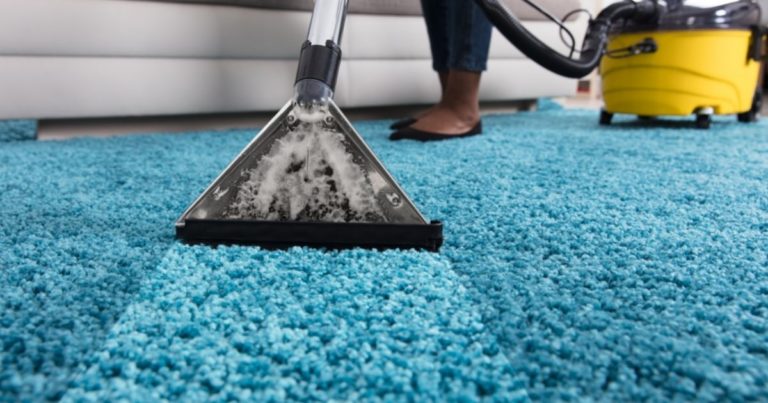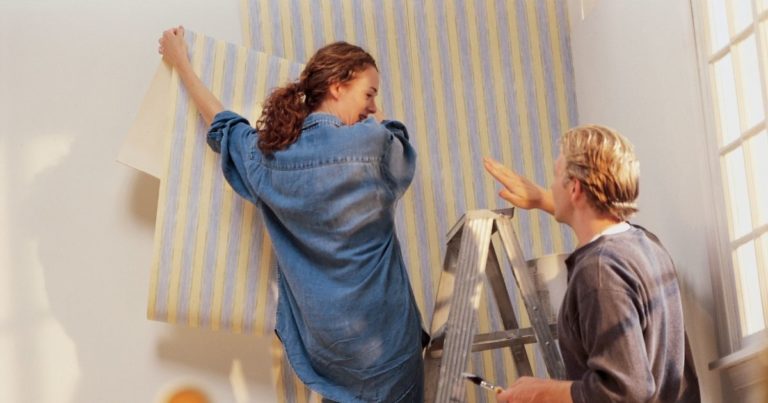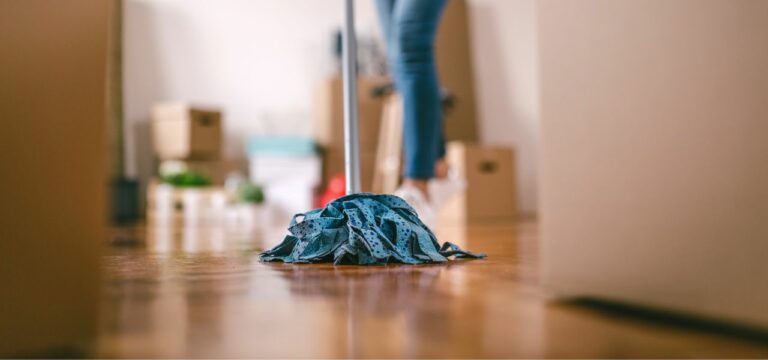Can You Steam Mop Concrete Floors?
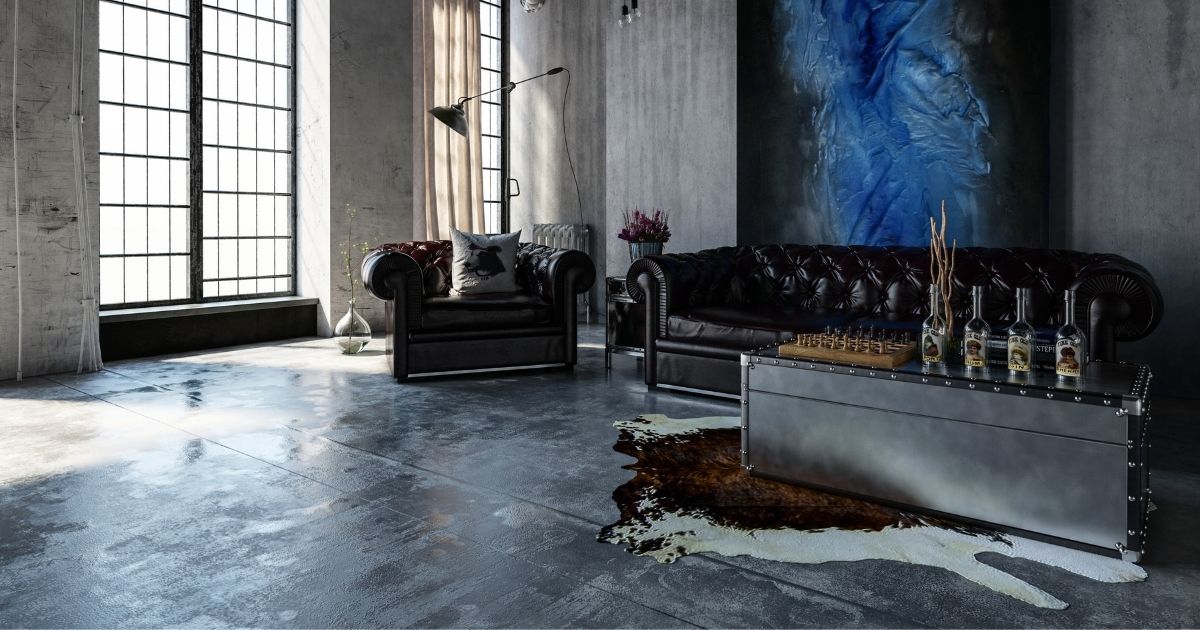
Concrete is a solid, durable material made from cement and aggregate. Concrete is porous unless sealed, so most concrete floors in garages, porches, patios, and driveways are not impervious to staining.
Often porch or patio floors will have an extra smooth surface, but they will still absorb stains easily. If you’ve landed on this article it’s because you’re wondering if you can steam mop concrete floors.
The answer depends on how the concrete is finished.
Types of Concrete Finishes
- Unsealed Concrete
- Polished Concrete
- Epoxy Coated Concrete
- Stamped Concrete
- Stained Concrete
What is the Difference Between Sealed and Unsealed Concrete Floors?
If you want to protect your concrete floor from damage, spills, and stains, you can seal it with a special layer of concrete sealer. This enhances its appearance, adds a shine, adds some protection against water damage, mold and stops concrete dust.
Compared to the unsealed concrete floors, sealed floors are easier to clean and more resistant to stains.
Unsealed Concrete
You can use a steam mop on concrete floors when they are unsealed. A steam mop or steam cleaner is an excellent way of cleaning unsealed concrete as the high heat of the steam will help to break down grease, oil, dirt and grime.
When using a steam mop or canister style steam cleaner on unsealed concrete remember the following:
- Steam mops use water alone – do not put any chemicals into the water tank.
- The scrubbing attachments for grout can help to remove tough stains. If you have a steam mop that doesn’t have attachments, try using a firm bristled brush in conjunction with the steam.
- If you feel you need to use heavy duty cleaners on tough stains, read the labels first before applying steam. Some chemicals react with heat and give off toxic vapors.
Remember, unsealed concrete is porous and will absorb moisture. Ensure you floor is left to dry thoroughly after steam cleaning and consider sealing the concrete floor in the future.
Can You Use a Steam Mop on Polished Concrete?
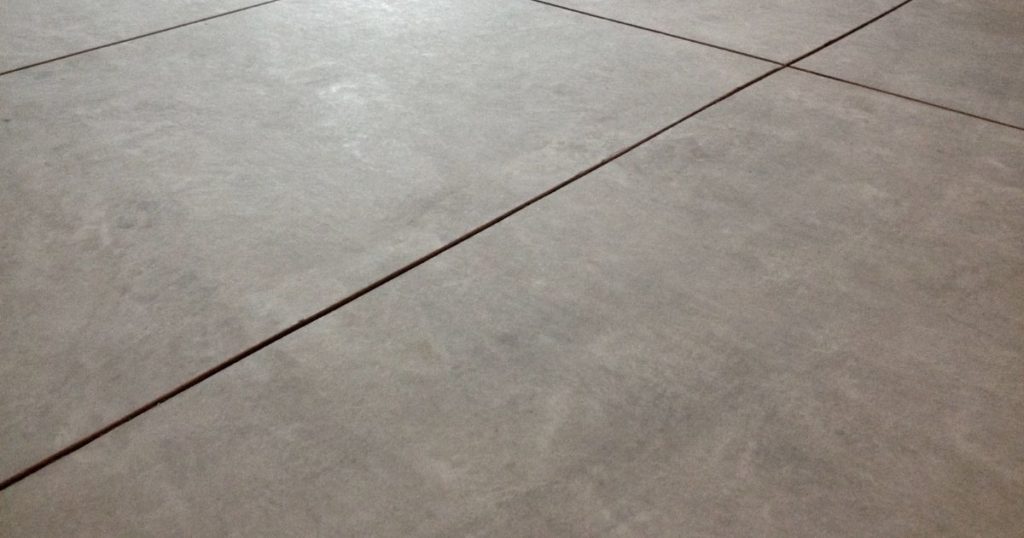
Polished concrete is low-maintenance flooring and is excellent for asthmatics and allergy sufferers. Polished concrete is impervious to dust, pollen, bacteria, mold, and mildew as long as the polish stays intact.
The soft microfiber cloths of steam mops are perfect for polished concrete. As you should clean polished concrete with water only or a pH-neutral cleaner, one would think that using a steam mop on polished concrete would be an excellent choice.
Unfortunately, the high heat from steam can dull polished concrete, so if you are going to use a steam mop on concrete floors that have been polished, you must do so with care. Choose a steam mop with variable settings and always use the lowest setting.
Before steaming, you want to remove any dust, dirt, and debris from the floor. Use a Swiffer style pad or soft broom. A vacuum may be too harsh on your polished concrete. If dirt, dust or debris are caught between the polished concrete and microfiber mop pad, these tiny particles can cause scratching of the floor.
Caution
You can cause white marks on polished concrete if you use too high heat or leave the steam mop in one place for too long. Some polymer finishes for concrete are lightweight and need refinishing 1-2 times per year. Using a steam mop on polymer finished concrete can cause the finish to melt away. It is best to consult a concrete flooring professional to determine the type of finish of your polished concrete and whether it can withstand the heat of steam.
Failing that, test in a small, inconspicuous area and see what happens. You’ll soon tell if you have a dull spot or white patches.
Ensure you avoid any chemicals such as vinegar, citrus, oils, bleach, or ammonia on polished concrete. Only use a pH-neutral cleaner or plain water; otherwise, your shiny polished concrete will soon become dull and lifeless.
Can You Use a Steam Mop on Epoxy Floors?
Epoxy is a form of resin mixed with a hardener, applied over the top of concrete, then cured. It is more durable than polished concrete and can generally withstand the high heat of steam cleaners without causing any problems.
So, if you have epoxy-coated concrete flooring in your home, garage, or workshop, a steam mop or steam cleaner should help to effectively clean the floors and restore shine.
Remember never to use soap-based cleaners or citrus-based cleaners on epoxy-coated concrete floors; they will dull the shine.
Harsh chemicals like ammonia and bleach should also be avoided.
Can You Use a Steam Mop on Stained Concrete?
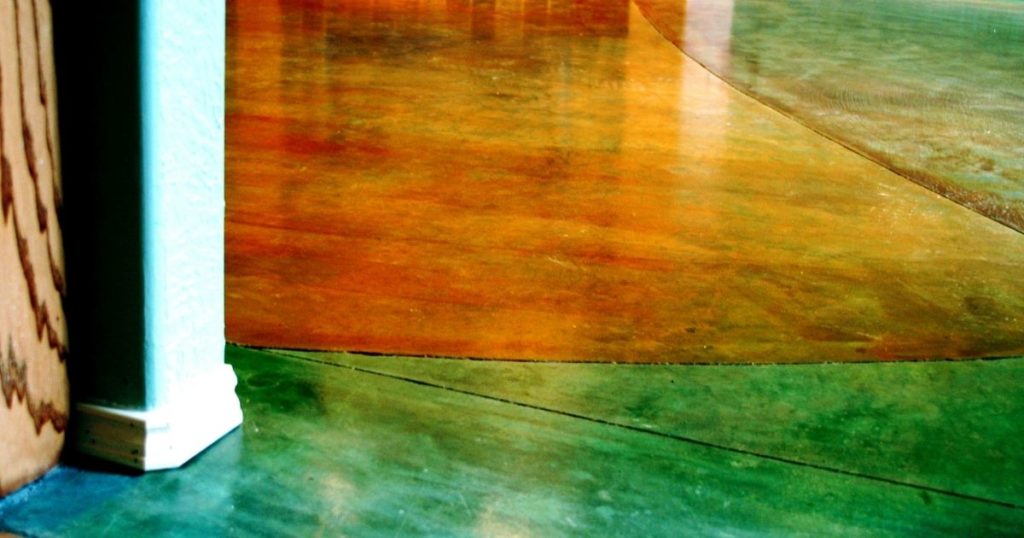
There are two types of stained concrete flooring; water-based acrylic stains and acid-based chemical stains.
Acid-based stains are generally limited to earthy tones such as terracotta, blue-green colors, tans, and browns. This is because of the reaction between the acid-soluble metal salts, hydrochloric acid, and water.
Water-based stains are a blend of acrylic polymers and pigments and are generally semi-translucent, like what is shown in the image.
Like polished concrete, steam should be used with caution on stained concrete flooring. Concrete is more porous than marble, and sealants can vary in quality.
As suggested with polished concrete, test in an inconspicuous area before you steam mop the middle of the room. Look for dullness, discoloration, and fading. If this happens, do not use your steam mop any further and use only a neutral pH cleaner and water.
If you are going to use a steam mop concrete floors that have been stained, use the lowest steam setting; assuming have a steam mop with variable steam control. If not, don’t hold the steam mop in one area, always keep it moving.
When changing power outlets or refilling the water reservoir, don’t leave your steam mop sitting on the stained concrete floor. A silicone mat can come in handy to place your steam mop on.
Can You Steam Stamped Concrete?
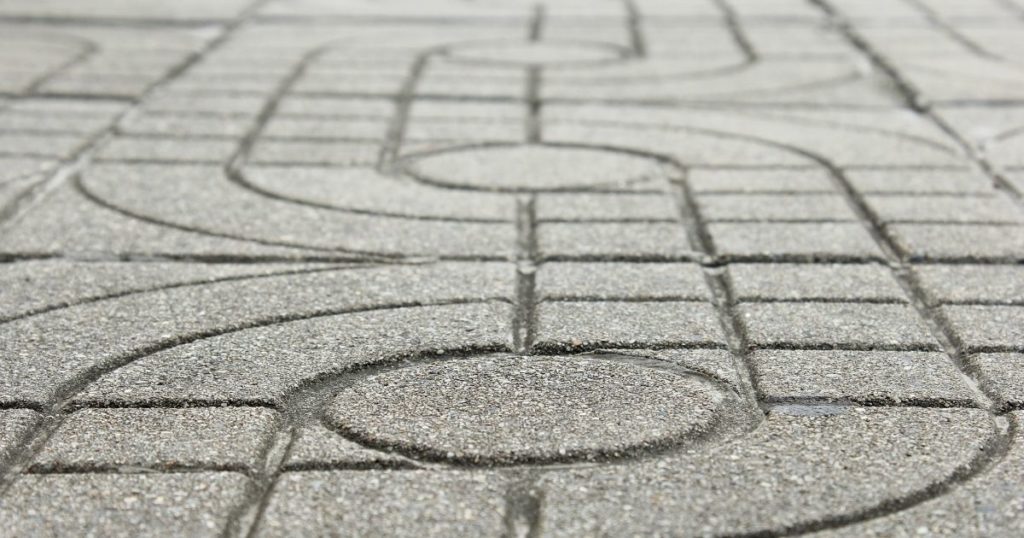
Stamped concrete was trendy in the 1990s and widely used in outdoor areas and driveways. As most stamped concrete is outdoors, you’ll find a pressure washer is a better option for cleaning stamped concrete than a steam mop or steam cleaner.
The microfiber pad of a steam mop would not glide easily over stamped concrete. If you have a steam cleaner with a brush attachment you could certainly try this using a low steam pressure.
Like steam cleaners, pressure washers can work at various pressures. Avoid using too high a pressure on stamped concrete – it can damage the textured surface or the sealer over the top.
Some warm water, liquid dish soap, and a push broom should help keep stamped concrete in good shape. Be sure to rinse away any soap residue with your garden hose.
Stamped concrete should generally be resealed every 2-3 years. Ensure your stamped concrete is completely dry before applying any sealer.
How to Steam Clean Concrete
- Sweep your flooring, or use a microfiber cloth to collect any dust and dirt particles.
- Steam the flooring using a steam mop with the microfiber pad attached. For more expansive floors, a steam cleaner may come in handy.
- If using a steam cleaner, use a nylon brush to get into the corners and along baseboards. Follow with a microfiber cloth.
- Clean joint lines with the jet nozzle to blow out dirt and debris. Follow with a microfiber cloth or the steamer head to collect the dirt. Try an old toothbrush to get into the joint lines if you use a steam mop and don’t have a jet nozzle.
Cleaning Concrete Floors With Vinegar
You should avoid using vinegar on any type of sealed concrete flooring. This acid-based product can dull the shine on your concrete flooring.
Over time, vinegar will create pits in your concrete finish and lead to erosion of the sealant.
Tips to Keep Your Concrete Floor Clean

Keeping your floor clean all the time is a challenge many homeowners experience. Below are some tips to help keep your concrete floor clean:
Clean Spills Immediately
In case you accidentally spill a drink on the floor, you should clean it immediately to prevent the formation of stains. This is essential for unsealed concrete and polished concrete surfaces.
Use a clean microfiber cloth to soak up the moisture, a paper towel, or a wet vacuum.
Use a Microfiber Mop Daily
A simple microfiber mop pushed across the sealed concrete will help collect dust and small dirt particles. The soft microfiber won’t damage the concrete or the polish.
You could also try a spray mop with water or a pH neutral cleaner for any noticeably dirty spots.
What are the Benefits of Sealed Concrete Floors
The good thing about sealed concrete floors is that they are attractive and easy to maintain. They are cool in Summer and absorb warmth in Winter, and can hold temperatures for some time.
You can build in heating to concrete floors in cooler climates. Polished concrete is a great alternative to tiles, and can be used in both residential and commercial settings.
Do Concrete Floors Require Maintenance?
Like other floors, concrete floors require maintenance to enhance their durability and appearance.
Epoxy floors will need resealing every few years. Depending on the quality of the sealant, polished and stained concrete floors may last a little longer.
Staining can occur to polished concrete from spills, and damage can occur from dropped items.
How do I Keep my Concrete Floor Shiny?
The best thing you can do to maintain your concrete floor’s shiny appearance is to clean it frequently using a soft microfiber cloth.
Conclusion
You might be tempted to steam mop concrete floors if you have them in your home. If you decide to give it a try, always test your steam mop in an inconspicuous area such as in the corner. If damage occurs, you can always cover that spot with a pot plant or a piece of furniture.
Like hardwood flooring, polish can melt and wear away from the high heat of steam. Use care when you steam mop concrete floors, and if in doubt, always contact a concrete flooring specialist for advice.
- Can You Use a Steam Mop On Karndean Flooring? - June 19, 2024
- How To Clean Unsealed Concrete Floors - June 7, 2024
- How to Clean Stamped Concrete - June 7, 2024

